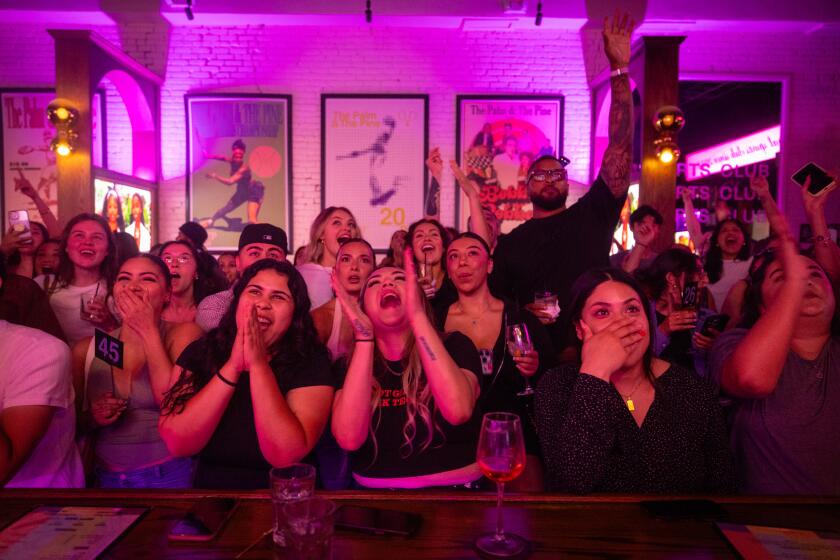Pearl Harbor Day train ride gives a taste of 1941
- Share via
The view from the San Diego-bound Amtrak Pacific Surfliner on Saturday was Americana 2010. Morning garage sales, youth soccer games, joggers on the beach and surfers in the ocean all flicked past at 80 mph.
Inside it was pure 1941, right down to the 1940s-era first-class lounge car, vintage Navy blue uniforms, Yank magazines and packages of Clove chewing gum.
Sixty-nine years after the attack on Hawaii’s Pearl Harbor, veterans and their families, railroad buffs and World War II reenactors in period dress took to the rails Saturday to mark Tuesday’s anniversary.
For passengers on the Pearl Harbor Day Troop Train ride — an annual event organized by a pair of railroad enthusiasts for the last eight years — it was a chance to hear firsthand accounts of the war from the people who fought it.
“Every time you meet a World War II veteran, you have to take into account that it is probably going to be the last time you are going to see them,” said Robert Smith, 32, of Monrovia, who came dressed in an impeccably preserved Navy uniform.
Along its route from Union Station in Los Angeles to San Diego, veterans and their relatives boarded at stops including Fullerton, Anaheim, San Juan Capistrano and Irvine.
On Dec. 7, 1941, the day the Japanese launched a surprise attack that killed 2,400 service members and civilians, Joe Kawka was a signalman on the destroyer Cassin, which was in a Pearl Harbor dry dock.
Kawka, now 89, and his fellow seamen climbed up onto the dock. The Japanese pilots were flying so low, Kawka said, he could see their faces.
One taunted him, wagging his finger as he flew by, Kawka said. Stuck without ammunition, the sailor had to improvise a response.
“I threw a potato at him, but I missed him by an inch,” Kawka said.
Logan Gray, now 86, served later in the war, enlisting in 1942. He was a petty officer 3rd Class and served on the aircraft carrier Wake Island, managing the cables that caught planes as they landed on deck.
The Wake Island was hit by a Kamikaze plane, an attack that ripped a hole in the bow, Gray recalled. Sailors could see their lockers floating away through the opening, he said. The damaged ship eventually limped back to harbor at Okinawa, Japan, for repairs.
It was a violent and treacherous experience, but Gray said he served out of an innate sense of duty.
“My brother was in the Army and I thought I should be doing my part, too,” said Gray, who rode the train with his wife, daughter and son-in-law. “That was the way we looked at it.... Most everybody was teenagers who were joining.”
Debbie and Bill Hatrick, who organize the event each year and own one of the two vintage rail cars used for the trip, said they were inspired to begin the ride after the 60th anniversary of the attack raised awareness about the dwindling number of World War II veterans. At that point, Veterans Affairs officials estimated that American veterans of the war were dying at a rate of about 1,000 a day.
“Today, we don’t get as many veterans as we did on the first ride,” said Debbie Hatrick, 54. “It is sad to see how many have gone.”
The encounters on the train are brief, said Bill Hatrick, 51, but the stories endure. During the six-hour round trip Saturday, veterans recalled enlisting at 17, Kamikaze attacks, wartime rationing and lost comrades. As the Hatricks look to the 70th anniversary next year, they know the search for veterans to ride along will be harder.
“Are we going to be able to find any survivors? I sure hope so,” Bill Hatrick said. “I’ve been privileged to connect with the greatest generation and say ‘thank you’ one more time.”
More to Read
Sign up for The Wild
We’ll help you find the best places to hike, bike and run, as well as the perfect silent spots for meditation and yoga.
You may occasionally receive promotional content from the Los Angeles Times.






